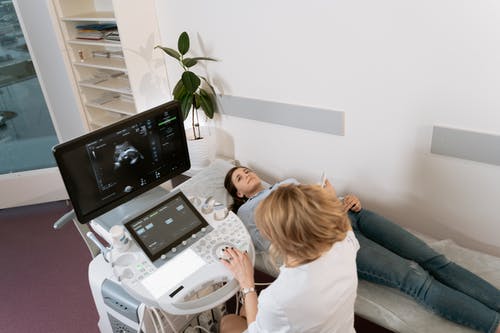Ultrasound imaging is a valuable diagnostic tool used in many medical fields. Understanding the fundamentals of ultrasound physics is essential for healthcare professionals to accurately interpret ultrasound images and effectively use ultrasound technology. In this article, we explore the physics of ultrasound by exploring its basic principles and concepts.
Ultrasound Basics
Ultrasound imaging uses sound waves to visualize the internal structures of the body. Sound waves travel through tissues and organs, reflecting the boundaries between different tissue types. To understand the principles of ultrasound physics, it is important to understand the properties of sound waves, such as frequency, wavelength and propagation speed.
Ultrasonic transducers
Ultrasonic transducers are integral parts of ultrasound equipment that emit and receive sound waves. The sensors convert electrical energy into mechanical vibrations and vice versa, allowing doctors to visualize anatomical structures and obtain diagnostic images. Different types of transducers, such as linear, curved and phased arrays, have unique applications and properties in ultrasound imaging.
Ultrasound beamforming
Transducers form an ultrasound beam that is guided into the body to image internal structures. The shape and focus of the ultrasound beam affect image quality and resolution. Factors such as transducer frequency, aperture size, and focusing technique determine the characteristics of the ultrasound beam and its ability to produce detailed images.
Ultrasound Imaging Modes
Ultrasound devices offer a variety of imaging modes, each with unique characteristics and applications. A-mode shows variations in the amplitude of ultrasound echoes, B-mode produces two-dimensional images, M-mode describes movement over time, and Doppler mode estimates the speed and direction of blood flow. To accurately interpret ultrasound images, it is important to understand the principles and characteristics of each imaging mode.
Ultrasound artifacts
Ultrasound artifacts are image deviations due to technical limitations or image acquisition errors. Common artifacts include reverberation, shadowing, and acoustic enhancement, which can affect image quality and diagnostic accuracy. Identifying and understanding the causes of artifacts is critical to optimizing the ultrasound image and reducing diagnostic errors.
Ultrasonic Doppler Effect
The Doppler effect is a phenomenon observed when the frequency of sound waves changes due to the relative movement of the source to the sound source. . an observer . Ultrasound imaging uses the Doppler effect to estimate the speed and direction of blood flow in blood vessels. Doppler ultrasound techniques provide valuable information about vascular physiology and pathology.
Ultrasound safety and quality assurance
Safety measures are necessary to ensure the safe and effective use of ultrasound in clinical practice. Healthcare professionals must follow established safety guidelines and protocols to minimize the risk of adverse effects associated with ultrasound exposure. Quality assurance programs and regular equipment maintenance are also essential to ensure accurate and reliable ultrasound imaging.
Advanced Ultrasound Physics Concepts
Advanced ultrasound techniques such as harmonic imaging and elastography offer additional diagnostic capabilities beyond conventional ultrasound imaging. Harmonic imaging improves image quality by reducing artifact levels, while elastography assesses tissue stiffness and elasticity. These advanced techniques have promising applications in several medical fields, including oncology, cardiology, and obstetrics.
Conclusion
Ultimately, understanding the fundamentals of ultrasound physics is critical for healthcare professionals to effectively use ultrasound technology and accurately interpret diagnostic images. By understanding the principles of ultrasound physics, healthcare professionals can improve their diagnostic skills, optimize image quality, and improve patient care outcomes.


